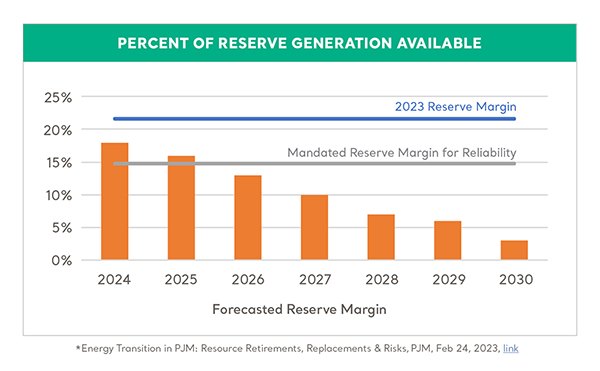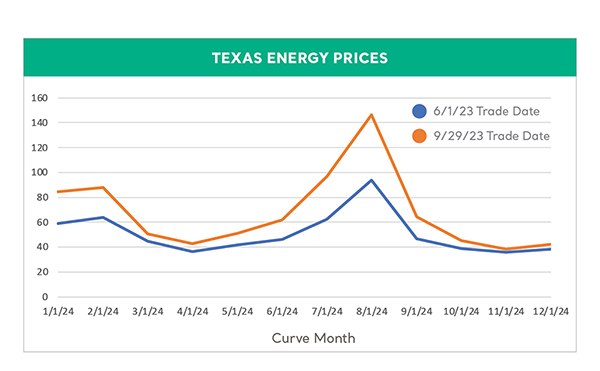Understanding Scarcity Pricing And Its Impact

If you manage your business’ energy decisions, you might be familiar with “scarcity pricing,” an economic term that refers to the price escalation that can happen when supply becomes tight in a commodity market.
Here, we offer an overview of scarcity pricing as well as the actions you can take to best manage the associated risks.
What's happening in the electricity market?
Electricity demand is expected to increase due to the growing number of electric vehicles, data centers, and other electrification needs. Combined with increased difficulties building out new generation, this has led to proposed regulatory changes seeking to maintain the reliable generation of electricity.
These proposed changes could lead to higher capacity prices in the future — the idea being that higher prices will incentivize long-term generation investment. It isn't clear, however, how quickly these changes might make an impact on the generation landscape.
Over the next several years, as we wait for the build-out of new generation sources, the amount of reserve generation intended to meet periods of peak demand is forecasted to shrink.
What's reserve generation — and why does it matter?
Due to the nature of electricity and our limited storage options, electricity must be generated as it's consumed, in real-time.
Because power plants can experience sudden shut-downs due to mechanical failure or other causes — and extreme weather can cause sudden and significant surges in demand — there’s an amount of generation that’s available but not currently connected to the grid. This is known as reserve generation, and we can call upon it to quickly connect to the grid and generate power when needed.
With the forecasted increase in electricity demand mentioned above, reserves are expected to decline over the next several years compared to the previous decade, which averaged between 20 and 25 percent.

How is the market reacting to this phenomenon?
In the interim, there’s a market mechanism called scarcity pricing, which increases the risk of price spikes. If there aren’t enough reserves ready to meet the requirements at any moment, scarcity pricing rules would send the cost of electricity soaring to almost 10,000 percent higher than where it typically averages. We’ve seen similar market mechanisms have sizeable impacts on energy prices in other regions of the country, such as Texas.
When this risk materializes, it can have repercussions to long-term pricing and increase energy prices for future delivery periods. Texas has seen several instances of scarcity pricing events this summer, and you can see in the chart below how energy prices for the 2024 delivery year have increased significantly over this time frame. While it’s impossible to isolate a single cause of market movement, it’s evident scarcity pricing has played a major role in these increases.

What actions can you take?
While regulatory changes are likely to impact the costs of reliable generation capacity, it will take several years to see the results of those changes. Before this happens, it’s important to understand how Scarcity pricing will be a major market mechanism impacting price risk.
Locking in a long-term contract is a potential option to avoid the energy price risk associated with scarcity pricing
Contact your IGS Energy rep for guidance on how to best control your energy costs.